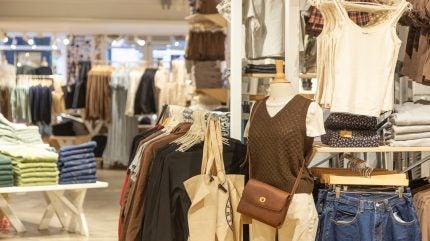UK fashion retailers hopeful for spring boost following February struggle

UK FASHION RETAILERS HOPEFUL FOR SPRING BOOST FOLLOWING FEBRUARY STRUGGLE
UK
fashion sales fell in February due to unfavourable weather conditions, while
total retail sales saw modest year-on-year growth.
The figures were released by the British Retail Consortium (BRC) and KPMG retail sales monitor and while the overall retail figure falls short of the three-month average growth rate of 2.4%, it exceeds the average annual growth rate of 0.8%.
With the arrival of sunnier days in early
March, retailers are optimistic about a rebound in consumer spending on
clothing for the upcoming spring and summer seasons.
British Retail Consortium chief executive
Helen Dickinson said: “Retail sales saw more modest growth in February. While
sales growth across non-food categories was generally muted, it was propped up
by online purchases, particularly in computing and electronics.
“Fashion performed poorly due to the gloomy weather throughout the month, but
retailers are hopeful the early March sunshine kickstarts spending on Spring
and Summer wardrobes.”
During the period between 2 February and 1
March 2025, sales in the non-food sector remain flat compared to the previous
year, which is an improvement over the 2.7% decline observed in February 2024.
However, these figures did not meet the
three-month average growth rate of 2.5% but did exceed the 12-month average
drop of 0.9%.
Physical store sales within the non-food
category saw a year-on-year decrease of 1.0% in February, which is a slight
improvement from the 1.8% decrease reported in February 2024.
These numbers were lower than the
three-month average growth rate of 0.8% but higher than the 12-month average
decline of 1.7%.
Conversely, online non-food sales showed an
uptick, with a year-on-year increase of 1.9% in February, contrasting sharply
with a decline of 4.1% in February 2024.
While these figures fell below the
three-month average growth rate of 5.3%, they were above the 12-month average
growth rate of 0.6%.
The online penetration rate for non-food
items also rose to 36.4% in February compared to 35.8% in February 2024.
Under the online sales category growth
rankings, house textiles, health and beauty, and other non-food categories
showed growth in February compared to January while clothing, footwear and home
accessories were down.
Helen Dickinson added: “This weak
performance makes many retailers uneasy, especially as they brace for £7bn of
new costs from the Budget and packaging levy in 2025, as well as the potential
impact of the Employment Rights Bill. The industry is already doing all it can
to absorb existing costs, but they will be left with little choice but to
increase prices or reduce investment in jobs and shops, or both.
“The focus of the Employment Rights Bill
should be on unscrupulous employers but instead the industry faces ongoing
uncertainty and a trajectory that risks punishing responsible businesses who
provide valuable employment, particularly at entry level. It is time for
government to course correct to ensure investment and growth are not
undermined.”
In January this year, a survey by the BRC
encompassing 52 UK retail sector chief financial officers revealed that
two-thirds of respondents (67%) plan to increase prices due to higher National
Insurance costs from April.
KPMG consumer, retail & leisure UK head
Linda Ellett said: “Consumers remain cautious with their spending and many are
continuing to prioritise saving, travel and experiences. Nervousness about the
economy is deferring other big ticket purchasing, but occasions and offers are
still tempting shoppers into some impulsive spending. Valentine’s, for example,
brought a jewellery sales boost to the high street, in what was otherwise a
flat month for in-store buying.”
By Just Style
